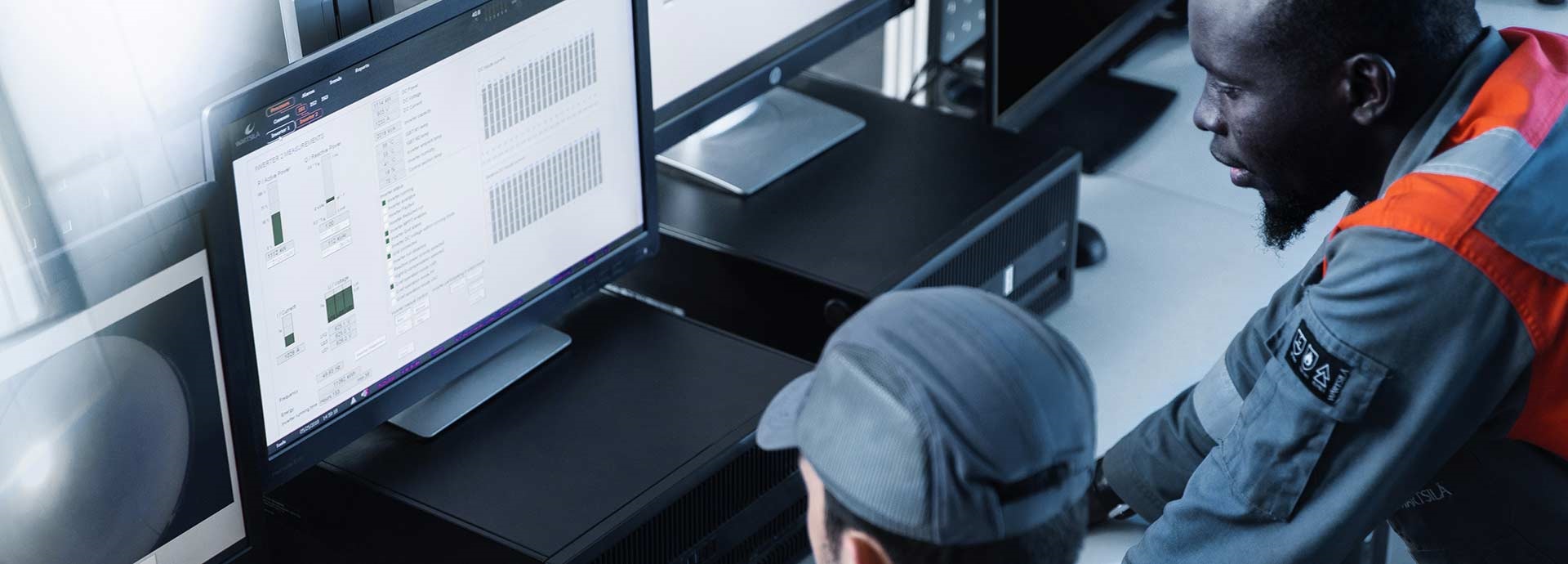

With power plants of 100 MW or fewer not requiring the full generation licensing process, many companies are considering generating their own power through the registration route with The National Energy Regulator of South Africa (NERSA). A
few options are available, which include gas engines, energy storage systems and renewables.
Apart from security of power supply, South African mining houses, much like their peers across Africa and the rest of the world, are under pressure to meet increasingly ambitious environmental and decarbonisation targets. Many mines believe that the best
response is to install solar PV plants. While renewables are the best option for rapid deployment and cheaper electricity, the sun will not always shine and PV plants have a level of intermittency, which needs the support of energy storage solutions,
and in some instances, gas engines.
A number of mines also work outside the normal hours of utilising a PV plant; a hybrid solution with gas engines and/or ESS will provide security of supply 24/7. Energy storage systems can also be used to store excess power generated by a PV plant during
the day and used during peak hours when the tariff is higher on the grid. Energy storage systems can significantly enhance the sizeable investment made in solar technology.
”We at Wärtsilä want to lead the transition to a 100% renewable energy future,” says Wallace Manyara, Business Development Manager, Region South & East Africa, Wärtsilä Energy. “It takes a variety of solutions
to decarbonise, such as balancing power plants which can use sustainable fuels, energy storage and energy management platforms. Lifecycle services can improve reliability, performance and efficiency, which lowers costs and emissions.”
Proper system management boosts efficiency
An example of this is the work Wärtsilä has done with gold producer B2Gold, for which it recently installed a hybrid solution at the off-grid Fekola Mine in Mali.
Enhanced by the advanced energy management Wärtsilä GEMS Digital Energy Platform, the system integrates, controls and optimises a 17.3 MW / 15.4 MWh
of energy storage alongside a 30 MW solar PV plant onsite, in addition to the mine’s existing 64 MW power generator.
GEMS monitors, controls and optimises energy assets. It supports a variety of battery and power electronics to achieve optimal system performance. What makes GEMS powerful is how it integrates and controls individual resources and entire fleets comprising
energy storage, renewables and traditional balancing generation. Using machine learning as well as historic and real-time data analytics to optimise the asset mix, GEMS enables customers to remotely monitor, operate, identify and diagnose equipment
safely, reliably and flexibly.
The project has hybridised the energy supply of Fekola Mine using a combination of renewables, storage, a power generation and an energy management system. This has reduced the facility’s dependence on imported heavy fuel oil, saving operational and transportation costs, as well as reducing greenhouse gas emissions.
It takes a variety of solutions to decarbonise, such as balancing power plants which can use sustainable fuels, energy storage and energy management platforms.
For Fekola, project payback is expected within four years. The projected long-term savings on mining operations will include 13.1 million litres or more of heavy fuel oil per year. The solution will also drive decarbonisation, with the mine’s
greenhouse gas emissions expected to reduce by approximately 86 million pounds of CO2 emissions per year.
“Mines in Mali have to work off-grid, given our infrastructure challenges there,” Manyara explains. “This project has proven the advantages of using energy storage with smart energy management controls to help the mine move towards
their decarbonisation objectives. The Wärtsilä hybrid solution ensures stable and uninterrupted power generation, benefiting the environment and the company’s bottom line.”
Another example is Geita Gold Mine, situated in
the Lake Victoria gold fields of north-western Tanzania, which is a flagship mine of AngloGold Ashanti. When Geita Gold Mine required a highly reliable power generation solution of 40 MW to support its growing operations, Wärtsilä provided
a turnkey engineering, procurement and construction solution and operation and maintenance. This integrated service ensured an uninterrupted off-grid power supply, eliminating revenue losses from power shortages.
Opportunity to embrace clean energy solutions
In a way, the situation in Mali echoes what is now happening in South Africa, especially given ongoing concerns around load shedding.
Local mining companies are being pushed to use cleaner fuel and progress on their decarbonisation journey. But more than that, they are trying to respond to the public utility Eskom’s power supply challenges and are considering a number of alternatives
through self-generation. Failure to secure power supply can mean a loss of millions of Rands in revenue. Furthermore, the escalating cost of Eskom electricity of at least 10% annually is forcing mines to look for alternative resources they can
manage more efficiently.
The need to embrace clean power through solar PV, storage and hydrogen mixed fuel sources becomes critical for a mine’s operational success.
“The bottom line is that successful decarbonisation comes down to planning,” says Manyara. “Africa is just at the beginning of the curve when it comes to this adoption, but the potential to learn from global best practices and to adopt our own strategy to ensure success is there. The time is now to begin to embrace these solutions and move forward into a new future of energy generation."
Did you like this? Subscribe to Insights updates!
Once every six weeks, you will get the top picks – the latest and the greatest pieces – from this Insights channel by email.



